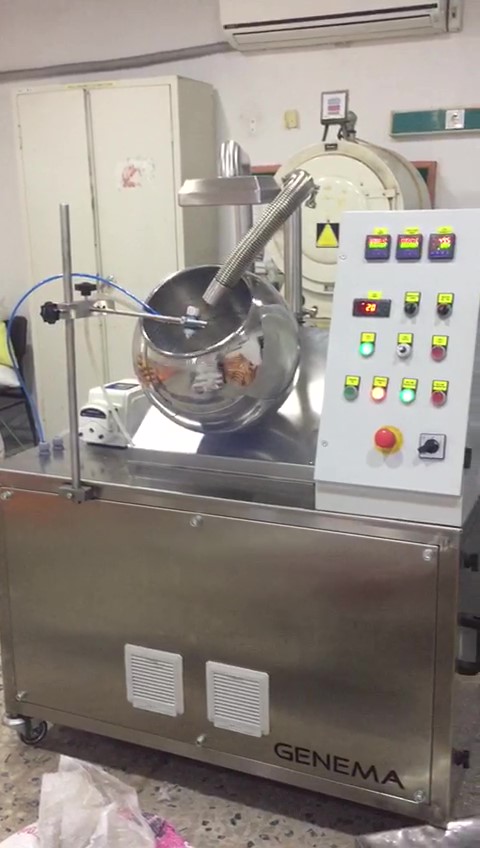Lab Scale Coating Machine

Coating machine is a specialized piece of equipment used to apply thin layers of material onto a substrate. These coatings can serve a variety of purposes, such as improving the surface properties of the substrate, enhancing its appearance, or providing protection against environmental factors. Researchers and developers commonly use laboratory coating machines to test the performance of coatings under various conditions. These machines also produce small batches of coated products, such as coated granules in the fertilizer industry. Laboratory coating machines come in a variety of sizes and designs and can coat various substrates.
Coating Parameters
- Coating thickness: This refers to the amount of coating material applied to the substrate, and is typically measured in micrometers or millimeters.
- Coating uniformity: This refers to the degree to which the coating is evenly distributed across the surface of the substrate.
- Coating porosity: This refers to the presence of small holes or voids within the coating, which can affect its performance.
- Coating adhesion: This refers to the strength of the bond between the coating and the substrate, and is important for the durability and performance of the coated product.
- Coating drying time: This refers to the amount of time required for the coating to fully cure or harden after it has been applied.
By carefully controlling these and other coating parameters, it is possible to achieve coatings with specific desired properties and performance characteristics.
Coating Operation
The machine consists of a rotating pan, a coating material supply system, and a drying chamber. To use the machine, the operator first places the substrate in the pan and applies the coating material using a variety of methods, such as spraying, dipping, or doctor blading. The drying chamber removes excess solvent and cures the coating on the substrate.Once the coating process is complete, the operator removes the coated substrate from the pan for further processing as needed.
Coating Materials
- Examples of polymers used in coater include polyvinyl acetate, polyvinyl alcohol, and cellulose acetate.
- Examples of waxes used in coater include carnauba wax, beeswax, and microcrystalline wax.
- Examples of resins used in coater include acrylic resins, epoxy resins, and urethane resins.
- Examples of pigments used in coater include titanium dioxide, iron oxide, and carbon black.
- Examples of solvents used in coater include water, ethanol, and acetone.
To summarize, the operator must choose a coating material that will provide the desired properties and performance of the coated product. There are many types of coating materials available, each with their own unique set of properties and suitable applications. The operator must carefully consider the specific requirements of the coating application and the desired properties of the coated product before selecting the most appropriate coating material. Ultimately, the right choice of coating material will ensure the best possible performance and results.
Features of Lab Scale Coating Machine
- A rotating pan that holds and rotates the substrate being coated
- A coating material supply system that delivers the coating material to the substrate
- A drying chamber that removes excess solvent and cures the coating
- A control panel for operating and monitoring the machine’s functions
- Safety features such as interlocks, guards, and emergency stop buttons
- The exhaust fan helps to maintain a safe and healthy working environment by ensuring that the air in the laboratory is clean and free of any harmful substances
- A range of sizes and capacities designed to coat small batches of products.
Furthermore, coating can be an environmentally friendly process. Many coatings are now formulated with eco-friendly ingredients For example, the use of a thin coating on a metal component can reduce the amount of material needed compared to using a thicker, uncoated component.
In conclusion, coating is an important process that provides a wide range of benefits to a variety of industries. It can protect against environmental factors, improve appearance and functional properties, and be environmentally friendly. As such, coating plays a crucial role in the design and production of many products.

